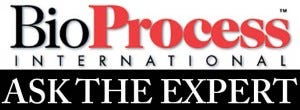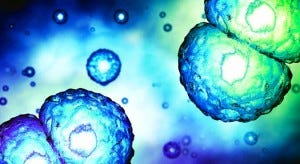Ask the Expert - Optimizing Cell Culture Media Supplements: Using Design of Experiments for CHO and HEK293 CellsAsk the Expert - Optimizing Cell Culture Media Supplements: Using Design of Experiments for CHO and HEK293 Cells
December 11, 2014
with Francesc Gòdia (chemical engineering professor at the Universitat Autònoma de Barcelona)
Chemically defined media free of animal-derived components are required for bioprocess operations based on mammalian cells. Supplementation of commercial media with specific compounds was studied using a design of experiments (DoE) approach to screen the most efficient compounds for two cell lines and then determine their optimal conditions. DoE allowed simultaneous testing of several compounds to determine potential interactions among them in addition to their individual effects.

Gòdia’s Presentation
Our work in optimization of animal-cell culture is a hybrid approach between using basal media and very complete, chemically defined, and serum-free media. We began with existing commercial media and supplemented them with specific proteins to improve cell growth. Our DoE starts with a proof- of-concept using a mixture of supplements to confirm that these improvements are realistic. Then we followed a two-step DoE approach.
The first step is screening or Plackett– Burman design to define the most effective supplements. The second step is optimization or Box–Behnken design to define the optimal concentrations of selected supplements for our specific case. We used these approaches systematically with two different cell lines: HEK293 and Chinese hamster ovary (CHO) cells.
For HEK293 cells producing Gag-GFP virus-like particles (VLPs), we used polyethylenimine transient transfection. Potential supplements include albumin, transferrin, insulin, and a lipid mixture. The best options for cell growth are not necessarily the best for transient transfection. The optimal media for cell growth are not best for transient transfection, and vice versa. We chose FreeStyle media from Life Technologies.
Next, we moved on to the Plackett- Burman design. We followed a DoE system using two different cell concentrations to provide a matrix of experiments. Out of those experiments, you can get a positive slope of the different components. Three of the four we tested had a more positive effect on cell growth and transient transfection, and we retained those.
Then we moved into the optimization phase. Here the matrix of experiments is based on three different goals for each of the three components. Individual experiments combine the different supplements, and a statistical polynomial approach shows both the effect of each component on an objective function and the cross-effects between different compounds. Thus you can build surface response curves and find an optimal combination. In this case, we obtained ≤5 million cells/mL (a 60% increase over FreeStyle media alone) using recombinant insulin (20 mg/L), recombinant transferrin (1.6 mg/L), and a lipid mix.
We followed the same logic with our CHO cell culture, with an objective function of cell growth. We selected a number of animal-derivative, chemically defined media and followed exactly the same three-step approach. Here, the proof-of-concept was quite positive and showed an increase in cell growth for the FreeStyle CHO medium. And we tested eight different compounds in the Plackett–Burman model.
Based on a toxicity test, we selected three compounds: selenium, transferrin, and insulin. In final screening, we tested those at three different levels. Out of these experiments, we got optimal levels for the three compounds. Finally, we corroborated experimentally the optimal conditions we had defined.
Questions and Answers
Can some new supplements negatively interact with compounds in the media? Yes. This is why, in both steps (particularly in the second step if one compound has a cross-effect with another) some compounds in our model are marked with a negative sign. This is something you can detect, and you can discard that particular compound.
Do you know which supplements were inhibiting HEK transfection? No, this is very difficult to know and a drawback of using commercially available media. You don’t know their composition. So you are a little bit blind in that sense. The only thing we can tell is that out of four commercial media, two were not good at the point of transient transfection. This part of our work was published in the Journal of Biotechnology.
What’s the difference between using response methodology and DoE? It depends on the particular support and approach that you’re used to. Because of the support we have from our statistical service, this is the methodology that we are quite used to following.
How did you choose what components to test? This was based on a literature survey. A follow-up question would be whether those media we tested already have a certain amount of the (supplemental) components we used. And we really do not know. Some vendors provide a little bit of information. But with proprietary media, it is impossible to know the precise formula.
More Online
The full presentation of this “Ask the Expert” webcast — with data — can be found on the BioProcess International website at http://bit.ly/ATE-1027.
You May Also Like






